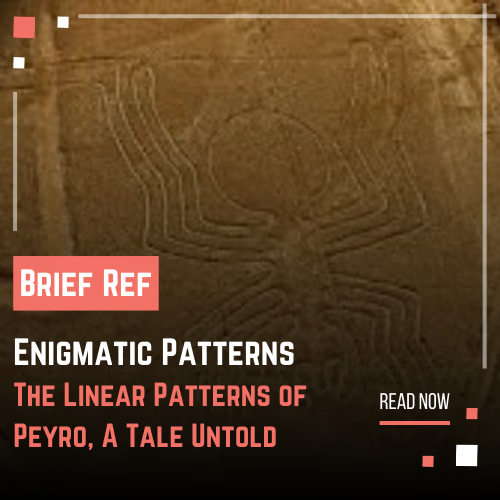Enigmatic Linear Patterns | Mysterious Nazca Lines
Peyro, a location shrouded in mystery, Mysterious Nazca Lines holds within its landscape a series of intriguing linear patterns etched subtly into the earth. These faint lines, barely discernible to the untrained eye, weave a complex tapestry across the terrain, hinting at a story whispered across millennia but yet to be fully deciphered. Their origin and purpose remain a captivating enigma, sparking speculation among researchers and fueling the imagination of those who encounter them.
The Mystery of the Lines
The lines themselves are remarkably consistent in their characteristics. The Nazca Lines are a series of geoglyphs located in the Nazca Desert in southern Peru. They are etched into the earth’s surface, and their creation remains a mystery. Let’s break down their description:
Mysterious Nazca Lines
- Width: The lines vary in width, ranging from 10 centimeters (4 inches) to 1 meter (3.3 feet) wide. There’s no consistent width across all lines.
- Depth: The lines are relatively shallow, typically only a few centimeters deep. They are created by removing the reddish-brown surface layer of stones to reveal the lighter-colored subsoil, Mysterious Nazca Lines.
- Color: The lines themselves don’t have a color; their appearance is due to the contrast between the darker reddish-brown surface stones that have been removed and the lighter-colored subsoil that is exposed.
- Typical Length: Lines vary dramatically in length. Some are short segments, while others extend for several kilometers.
- Spacing: The spacing between the lines also varies considerably. Some are closely spaced, while others are widely separated.
- Distinguishing Features: Many lines appear remarkably straight despite their considerable length, implying a high degree of planning and precision in their creation. Some show slight curves or bends.
Arrangement of Lines
The arrangement of the Nazca Lines is their most remarkable feature and a source of ongoing debate. While many are straight lines, their overall arrangement is not random. They include:
- Long Straight Lines: These are the most abundant type and extend for considerable distances, sometimes running parallel to each other.
- Geometric Shapes: Numerous geometric shapes are present, including triangles, trapezoids, and spirals. These are often formed by combinations of lines.
- Figures: The most famous features are the large figures of animals and plants, such as a hummingbird, monkey, spider, and lizard. These are created using a multitude of interconnected lines.
- Intersecting Lines: Many lines intersect at various angles, sometimes forming complex patterns.
- Radiating Lines: While not as prevalent as other arrangements, some lines seem to radiate outwards from a central point.
The unusual arrangement of these lines, their precision, and vast scale are what makes the Nazca Lines a significant archaeological puzzle. There is no single, universally accepted explanation for their purpose or creation. Immediately sets them apart from natural geological formations. This deliberate-seeming arrangement is what makes the mystery so compelling.
Hypotheses and Theories
Several theories have been proposed to explain the origin of these enigmatic lines. One possibility suggests a connection to ancient astronomical observations. The alignment of certain lines with celestial bodies could indicate a sophisticated understanding of astronomy by a long-vanished civilization. Perhaps these lines served as a prehistoric observatory, used to track the movements of stars and planets, providing crucial information for agricultural practices or religious rituals.
Hypothesis proposes a meteorological link
Another hypothesis proposes a meteorological link. The lines might represent ancient drainage systems, carefully designed to manage water flow during periods of heavy rainfall or snowmelt. The patterns could reflect a deep understanding of the local hydrology, essential for preventing erosion and ensuring the fertility of the land. Detailed analysis of the soil composition and water flow patterns around the lines would be necessary to validate this theory.
Territorial boundaries
It is also possible that the lines are related to land ownership or territorial boundaries. Such markings, if ancient, could represent the limits of different settlements or grazing areas, reflecting the social and economic organization of the communities that once inhabited the region. Archeological investigations in the vicinity of the lines could reveal evidence of settlements or other human activity that would support this interpretation.
Esoteric connection
Some even speculate a more esoteric connection, suggesting a ritualistic or symbolic significance. The patterns might represent a form of ancient writing or a coded message, the key to which has been lost to time. This theory, however, would require deciphering a system of markings with no known parallels in other ancient cultures, making it perhaps the most challenging to prove, Mysterious Nazca Lines
The Ongoing Search for Answers
The mystery of Peyro’s linear patterns continues to intrigue researchers. While none of the existing hypotheses definitively explains their origins, each offers a valuable perspective on the possible ways in which past cultures interacted with their environment. Further investigation, incorporating geological, archeological, and astronomical techniques, is necessary to unveil the secrets embedded within these subtle yet captivating lines. The quest to decipher the story etched into Peyro’s earth remains an open invitation to delve into the past and unearth a piece of human history that has so far remained hidden. The puzzle is far from solved, and the enigmatic lines of Peyro continue to beckon, promising the reward of discovery to those persistent enough to pursue the answers.




